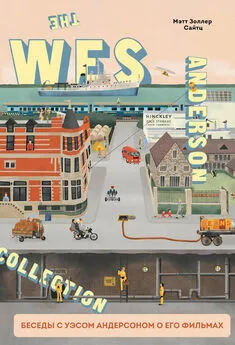Oskar Andreasson - Iptables Tutorial 1.2.2
- Название:Iptables Tutorial 1.2.2
- Автор:
- Жанр:
- Издательство:неизвестно
- Год:неизвестен
- ISBN:нет данных
- Рейтинг:
- Избранное:Добавить в избранное
-
Отзывы:
-
Ваша оценка:
Oskar Andreasson - Iptables Tutorial 1.2.2 краткое содержание
Iptables Tutorial 1.2.2 - читать онлайн бесплатно полную версию (весь текст целиком)
Интервал:
Закладка:
Terms used in this document
This document contains a few terms that may need more detailed explanations before you read them. This section will try to cover the most obvious ones and how I have chosen to use them within this document.
Connection- This is generally referred to in this document as a series of packets relating to each other. These packets refer to each other as an established kind of connection. A connection is in another word a series of exchanged packets. In TCP, this mainly means establishing a connection via the 3-way handshake, and then this is considered a connection until the release handshake.
DNAT- Destination Network Address Translation. DNAT refers to the technique of translating the Destination IP address of a packet, or to change it simply put. This is used together with SNAT to allow several hosts to share a single Internet routable IP address, and to still provide Server Services. This is normally done by assigning different ports with an Internet routable IP address, and then tell the Linux router where to send the traffic.
IPSEC- Internet Protocol Security is a protocol used to encrypt IPv4 packets and sending them securely over the Internet. For more information on IPSEC, look in the Other resources and links appendix for other resources on the topic.
Kernel space- This is more or less the opposite of User space. This implies the actions that take place within the kernel, and not outside of the kernel.
Packet- A singular unit sent over a network, containing a header and a data portion. For example, an IP packet or an TCP packet. In Request For Comments (RFC's) a packet isn't so generalized, instead IP packets are called datagrams, while TCP packets are called segments. I have chosen to call pretty much everything packets in this document for simplicity.
QoS- Quality of Service is a way of specifying how a packet should be handled and what kind of service quality it should receive while sending it. For more information on this topic, take a look in the TCP/IP repetition chapter as well as the Other resources and links appendix for external resources on the subject.
Segment- A TCP segment is pretty much the same as an packet, but a formalized word for a TCP packet.
Stream- This term refers to a connection that sends and receives packets that are related to each other in some fashion. Basically, I have used this term for any kind of connection that sends two or more packets in both directions. In TCP this may mean a connection that sends a SYN and then replies with an SYN/ACK, but it may also mean a connection that sends a SYN and then replies with an ICMP Host unreachable. In other words, I use this term very loosely.
SNAT - Source Network Address Translation. This refers to the techniques used to translate one source address to another in a packet. This is used to make it possible for several hosts to share a single Internet routable IP address, since there is currently a shortage of available IP addresses in IPv4 (IPv6 will solve this).
State - This term refers to which state the packet is in, either according to RFC 793 - Transmission Control Protocol or according to userside states used in Netfilter/iptables. Note that the used states internally, and externally, do not follow the RFC 793 specification fully. The main reason is that Netfilter has to make several assumptions about the connections and packets.
User space - With this term I mean everything and anything that takes place outside the kernel. For example, invoking iptables -h takes place outside the kernel, while iptables -A FORWARD -p tcp -j ACCEPT takes place (partially) within the kernel, since a new rule is added to the ruleset.
Userland - See User space.
VPN - Virtual Private Network is a technique used to create virtually private networks over non-private networks, such as the Internet. IPSEC is one technique used to create VPN connections. OpenVPN is another.
What's next?
This chapter has given some small insight into why this document was written and how it was written. It also explained some common terms used throughout the document.
The next chapter will bring up a rather lengthy introduction and repetition to TCP/IP. Basically this means the IP protocol and some of its sub-protocols that are commonly used with iptables and netfilter. These are TCP, UDP, ICMP and SCTP. SCTP is a rather new standard in comparison to the other protocols, hence quite a lot of space and time has gone into describing this protocol for all of those who are still not quite familiar with it. The next chapter will also discuss some basic and more advanced routing techniques used today.
Chapter 2. TCP/IP repetition
Iptables is an extremely knowledge intensive tool. This means that iptables takes quite a bit of knowledge to be able to use iptables to it's full extent. Among other things, you must have a very good understanding of the TCP/IP protocol.
This chapter aims at explaining the pure "must understands" of TCP/IP before you can go on and work with iptables. Among the things we will go through are the IP, TCP, UDP and ICMP protocols and their headers, and general usages of each of these protocols and how they correlate to each other. Iptables works inside Internet and Transport layers, and because of that, this chapter will focus mainly on those layers as well.
Iptables is also able to work on higher layers, such as the Application layer. However, it was not built for this task, and should not be used for that kind of usage. I will explain more about this in the IP filtering introduction chapter.
TCP/IP Layers
TCP/IP is, as already stated, multi-layered. This means that we have one functionality running at one depth, and another one at another level, etcetera. The reason that we have all of these layers is actually very simple.
The biggest reason is that the whole architecture is very extensible. We can add new functionality to the application layers, for example, without having to reimplement the whole TCP/IP stack code, or to include a complete TCP/IP stack into the actual application. Just the same way as we don't need to rewrite every single program, every time that we make a new network interface card. Each layer should need to know as little as possible about each other, to keep them separated.
NoteWhen we are talking about the programming code of TCP/IP which resides inside the kernel, we are often talking about the TCP/IP stack. The TCP/IP stack simply means all of the sublayers used, from the Network access layer and all the way up to the Application layer.
There are two basic architectures to follow when talking about layers. One of them is the OSI (Open Systems Interconnect) Reference Model and consists of 7 layers. We will only look at it superficially here since we are more interested in the TCP/IP layers. However, from an historical point, this is interesting to know about, especially if you are working with lots of different types of networks. The layers are as follows in the OSI Reference Modellist.
NoteThere is some discussion as to which of these reference models is mostly used, but it seems that the OSI reference model still is the prevalent reference model. This might also depend on where you live, however, in most US and EU countries it seems as you can default to OSI reference model while speaking to technicians and salespeople.
However, throughout the rest of this document, we will mainly refer to the TCP/IP reference model, unless otherwise note
Application layer
Presentation layer
Session layer
Transport layer
Network layer
Data Link layer
Physical layer
A packet that is sent by us, goes from the top and to the bottom of this list, each layer adding its own set of headers to the packet in what we call the encapsulation phase. When the packet finally reaches it's destination the packet goes backwards through the list and the headers are stripped out of the packet, one by one, each header giving the destination host all of the needed information for the packet data to finally reach the application or program that it was destined for.
The second and more interesting layering standard that we are more interested in is the TCP/IP protocol architecture, as shown in the TCP/IP architecturelist. There is no universal agreement among people on just how many layers there are in the TCP/IP architecture. However, it is generally considered that there are 3 through 5 layers available, and in most pictures and explanations, there will be 4 layers discussed. We will, for simplicities sake, only consider those four layers that are generally discussed.
Application layer
Transport layer
Internet layer
Network Access layer
As you can see, the architecture of the TCP/IP protocol set is very much like the OSI Reference Model, but yet not. Just the same as with the OSI Reference Model, we add and subtract headers for each layer that we enter or leave.
For example, lets use one of the most common analogies to modern computer networking, the snail-mail letter. Everything is done in steps, just as is everything in TCP/IP.
You want to send a letter to someone asking how they are, and what they are doing. To do this, you must first create the data, or questions. The actual data would be located inside the Application layer.
After this we would put the data written on a sheet of paper inside an envelope and write on it to whom the letter is destined for within a specific company or household. Perhaps something like the example below:
Attn: John Doe
This is equivalent to the the Transport layer, as it is known in TCP/IP. In the Transport layer, if we were dealing with TCP, this would have been equivalent to some port (e.g., port 25).
At this point we write the address on the envelope of the recipient, such as this:
Andersgardsgatan 2 41715 Gothenburg
his would in the analogy be the same as the Internet layer. The internet layer contains information telling us where to reach the recipient, or host, in a TCP/IP network. Just the same way as the recipient on an envelope. This would be the equivalent of the IP address in other words (e.g., IP 192.168.0.4).
The final step is to put the whole letter in a postbox. Doing this would approximately equal to putting a packet into the Network Access Layer. The network access layer contains the functions and routines for accessing the actual physical network that the packet should be transported over.
When the receiver finally receives the letter, he will open the whole letter from the envelope and address etc (decapsulate it). The letter he receives may either require a reply or not. In either case, the letter may be replied upon by the receiver, by reversing the receiver and transmitter addresses on the original letter he received, so that receiver becomes transmitter, and transmitter becomes receiver.
NoteIt is very important to understand that iptables was and is specifically built to work on the headers of the Internet and the Transport layers. It is possible to do some very basic filtering with iptables in the Application and Network access layers as well, but it was not designed for this, nor is it very suitable for those purposes.
For example, if we use a string match and match for a specific string inside the packet, lets say get /index.html. Will that work? Normally, yes. However, if the packet size is very small, it will not. The reason is that iptables is built to work on a per packet basis, which means that if the string is split into several separate packets, iptables will not see that whole string. For this reason, you are much, much better off using a proxy of some sort for filtering in the application layer. We will discuss these problems in more detail later on in the IP filtering introduction .
Читать дальшеИнтервал:
Закладка:










